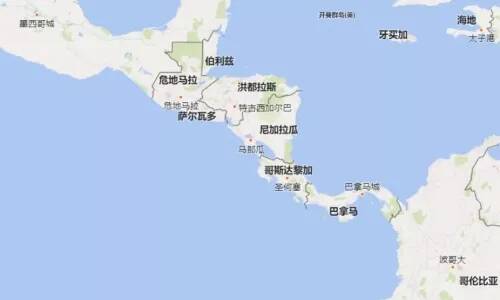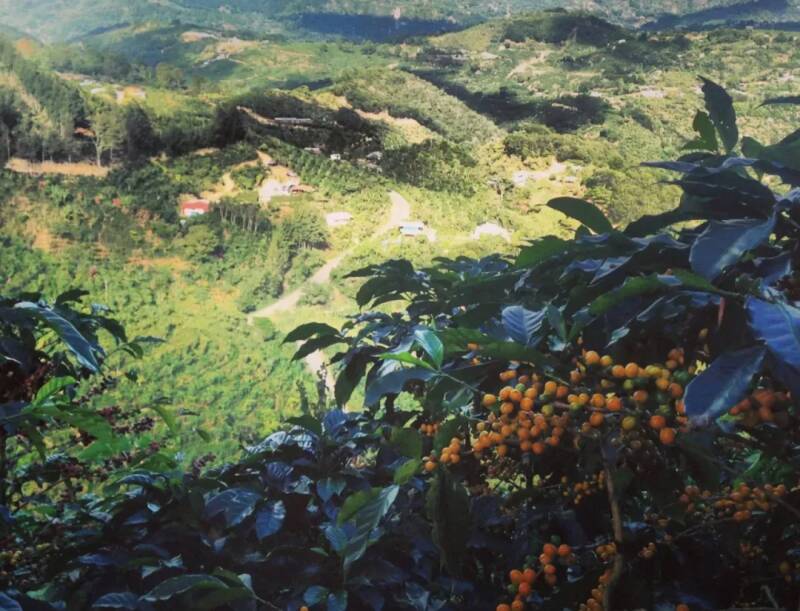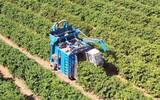Costa Rica| Introduction to Western Valley Coffee Estate in Coffee Region
Central America refers to the central American continent south of the United States and north of Colombia, where the topography is dominated by plateaus, mountains and forests, and the volcanic belt stretches more than 1300 kilometers on one side of the Pacific Ocean. The hot and humid climate here, due to the accumulation of volcanic ash, fertile soil, mainly exports bananas, coffee and other tropical cash crops.
In many countries in Central America, many countries are famous for producing coffee, such as Guatemala, Costa Rica and Panama. Among them, the first country to start growing coffee is Costa Rica, which is currently the 14th largest coffee producer in the world.

Costa Rica is a small country, but it has more than 1200 kilometers of coastline, volcanoes, rich biological species and vast forests, so "Costa Rica" means "fertile coast" in Spanish.
Costa Rica is mostly mountainous and plateau topography, and the Cordillera Mountains run through the middle of the country, separating the east and west sides, which also makes the climate of the two regions completely different. Costa Rica's climate is mainly tropical rain forest climate and savanna climate, the annual rainy season is from April to December, and the dry season is from December to April. It can be said that Costa Rica has very suitable geographical conditions for growing coffee.

Originally in the late 18th century, Costa Rica introduced and grew coffee because of its commercial value. At that time, after Costa Rica became independent from Spain, in order to promote coffee cultivation, the government distributed seeds to farmers free of charge, implemented a tax-free policy, and even issued a decree that "land can be owned by growing coffee." for this reason, many people joined the ranks of growing coffee and promoted the development of coffee trade.
In order to improve the quality of coffee, Costa Rica first introduced the method of washing in 1830. Compared with sun treatment, washed coffee has a lower defect rate and can better control the quality of coffee, which makes the quality of Costa Rican coffee good enough at that time. Later, however, it was difficult to store water because of growing coffee in the mountains, so we went to learn from the half-sun in Brazil and improved it according to the situation in our country, which eventually evolved into the country's famous honey treatment.
After that, the country's coffee was sold to England and was praised as the "golden bean" by the British aristocracy, for which the British increased their investment in Costa Rica. The Anglo-Costa Rican Bank of Costa Rica also came into being in 1863 to finance the development of land, cultivation of arable land and the establishment of treatment plants. Because of the importance of coffee quality, a decree was even issued in 1989 banning the cultivation of Robusta in the country.
There are seven coffee producing areas in Costa Rica, namely: the Western Valley (Valley Central Occidental), the Central Valley (Valley Central), the Tarazu (Tarrazu), the Sanshui River (Tres Rios), Orosi (Orosi), Brunca (Bronka) and Turrialba (Duli Alba). Almost all of these areas are distributed in the central mountains.
Among them, Tarrazu is the largest and best-known coffee producing area in the country, and most of the award-winning estates on the Excellence Cup COE in Costa Rica are from Tarazhu producing areas. But in fact, there are also some high-quality coffee in other coffee producing areas, such as Valley Central Occidental, which often appear on the COE list.
The western valley (Valley Central Occidental), along with Tarazu (Tarrazu) and the central valley (Valley Central), are the three best producing areas in the country. The producing area is located in the central mountains, with Boaz volcanoes Poas and Barlois volcanoes Barva to the east and San Ramon Mountains San Ramon and Turrubares mountains to the west. The average elevation of coffee is between 1000 and 1600 meters. In addition to being surrounded by mountains and volcanoes, it is also blown by the Pacific airstream, which is cooler than other producing areas, with an average annual temperature of 21.50 ℃, so there are many well-known estates, such as Blue Volcano Manor (Volcan Azul) and Beautiful Plain Manor (Monte Llano Bonito).
Beautiful Plain Manor (Monte Llano Bonito), located in the western valley, in the north of the volcano group, near Orange County (Naranjo), coffee is planted 1700 meters above sea level, growing many coffee varieties such as Vera Saatchi Villasarchi, SL28, Rosa Geisha, Kaddura Caturra and St. Locke San Roque.
The estate is owned by Francisco Mena, which owns two estates, Finca Sumava de Lourdes and Monte Llano Bonito, and reserves a large amount of land as a forest reserve for wild animals to live naturally. There is also a full-time team to ensure the quality of coffee grown and processed and to produce high-quality coffee, the estate won the Costa Rican COE championship in 2016, while in this year's COE, it finished third in the experimental treatment group (Experimental) with a score of 90.42.
Important Notice :
前街咖啡 FrontStreet Coffee has moved to new addredd:
FrontStreet Coffee Address: 315,Donghua East Road,GuangZhou
Tel:020 38364473
- Prev

A large number of fake group orders are coming! Coffee shop owner: I met twice in half a month!
▲ Click to pay attention| Daily Boutique Coffee Culture Magazine Coffee Workshop Recently, many coffee shop operators posted on social platforms saying that they had encountered group order scams. The contact person first stated that he would purchase a large number of coffee drinks, cakes and snacks and other products on the grounds that schools, companies, enterprises and other units would hold team building activities. with
- Next

Dry weather continues in Brazil! Drought warnings issued in some coffee-producing areas
Currently, it is the harvest season for Brazilian coffee. According to data released by consulting firm Safras& Mercado, Brazil has already harvested 58% of this year's coffee production, much higher than the average harvest progress of 54% in the past five years. The accelerated harvest progress is due to the current dryness
Related
- What effect does Italian American coffee with filter paper have? Will coffee taste better if it is put on filter paper at the bottom of the powder bowl?
- What is the color difference in coffee beans? What are the characteristics of honey processed coffee beans? Why are the anaerobically treated coffee beans uneven in color?
- How does novice Xiaobai quickly get started and make coffee? Newbies learn to make coffee by hand and share the specific steps and process process!
- Costa tea has a shelf life of 100 years?! Expert: Unable to verify
- It's a huge uproar! American milk addition was rejected by Manner employees?!
- Mocha pot coffee bean recommendations| How fine and how much powder should be used for grinding? What parameter ratios do I need to use to make milk with Mocha pot coffee?
- What are the characteristics of the world's top ten coffee beans treated with Costa Rica honey? How to make black honey kadura from Tarazhu Pilon Processing Plant taste good?
- How to make deep-roasted coffee? What grinding water temperature does authentic Jamaica Blue Mountain No. 1 coffee use to brew it well?
- Selected high-grade rose summer coffee flavor tasting guide Why Panama rose summer has the aroma of flowers and fruits
- What equipment does a novice Xiaobai need to buy to learn to make coffee? Filter cup electronic scale bean grinder manual flushing pot purchase guide

